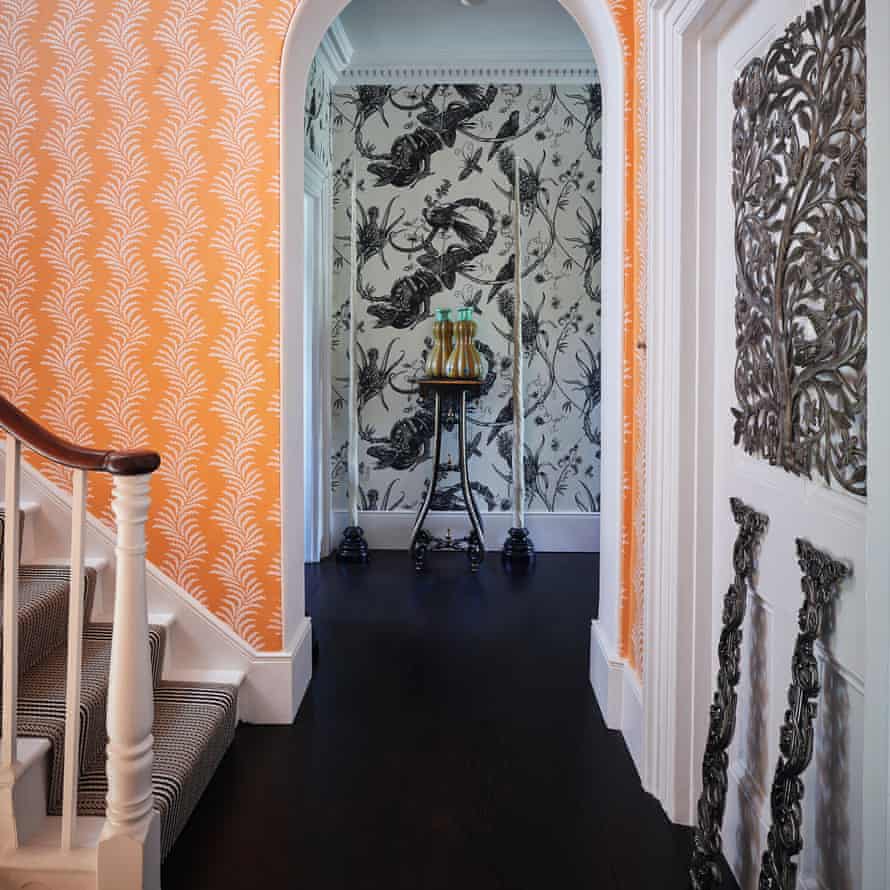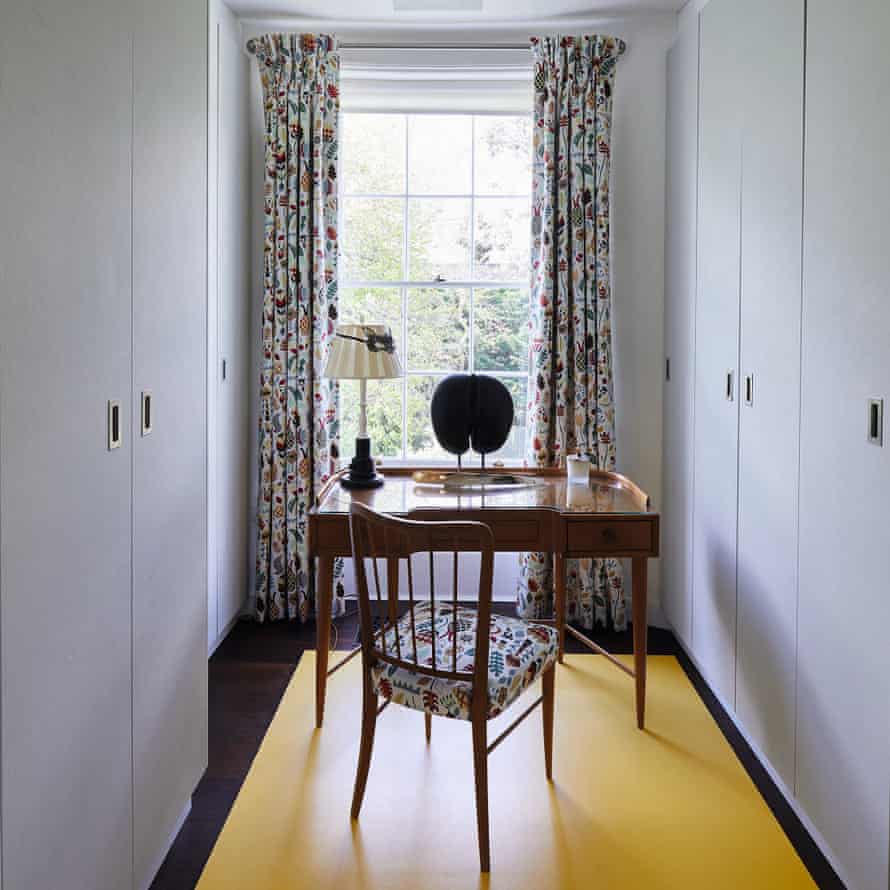
I don’t like mid-tones,” says Manfredi della Gherardesca. “Cappuccinos, bland colours: they just don’t work. Marriages often produce greyish houses, because nobody wants to fight about colour. But I have always loved colour.”
This should come as little surprise to visitors to Della Gherardesca’s south London home, with its walls papered in black-and-white patterns of writhing lizards, its yellow floors and Pepto-Bismol pink living room.
By combining pops of colour – from lime-green kitchen cupboards to an orange-painted hallway – and adding sumptuous fabrics, oil paintings, antiques, objects collected over the years and quirky collections, this interior designer and art consultant has created a lush interior that feels like it’s been this way for decades.
But this is far from the case: a couple of years ago, his house was just a white box.
In the hallway, alongside the Timorous Beasties’ iguanas and birds wallpaper, are an ornate gilt sideboard and mirror; through an arch into the stairway, the orange walls are stencilled with a palm motif. A black-and-white-striped carpet runs the length of the stairs.
In the pink living room, with its floor-to-ceiling sash windows, a bespoke, mid-century-style sofa and chairs surround a coffee table laden with objects. Overseeing all, on a mint-green plinth, is a 1970s ceramic totem lamp by Georges Pelletier. “I thought it was like Star Wars meets Walt Disney,” says Della Gherardesca.
The bedrooms have more texture and mismatched patterns. Built-in wardrobes opposite the bed in the guest bedroom are papered in the same Turkish-style block print wallpaper as the rest of the room. Artworks in the master bedroom include a print of Just an Average Guy by Ed Ruscha.
Della Gherardesca’s desk is tucked away on the top-floor landing by the guest room, making good use of a slightly awkward space. It’s illuminated by a skylight, whose light is amplified by surrounding boxed-in mirrors.
He doesn’t labour over matching periods or styles, but considers each piece of furniture, object and artwork in relation to its neighbour. Thus the elegant sofa and a carved lion sit alongside a plastic gnome brazenly flipping his middle finger.

“You need bad taste,” he says, “because it counterbalances things – it all works together so long as what you’re surrounded with is loved and has meaning, and is not just pure accumulation.”
When Della Gherardesca moved into his house in Stockwell a couple of years ago, he built the bulk of his collection to fill the space pretty quickly. “I cherish every occasion to go shopping,” he says, “and I tend to nest fast. I arrive somewhere, I put together what I want to do with it, then I go ahead.
“I started collecting as soon as I could put things together with my hands,” he says, “from matchboxes and little cars to books. I have been collecting all my life.” In the kitchen-dining room he displays a set of more than 40 deep purple teapots (“I love the aubergine colour”) and a collection of 1930s boxes made from fossilised crocodile skin.

“I’m interested in unusual, rare objects, things that are culturally out of reach.” But that doesn’t necessarily mean that everything needs to be 100% original, he says. “If something is beautifully made, the fact that it is modern is unimportant.”
“Here are two pastels, in Louis XVI frames,” he says, gesturing to pictures either side of the fireplace that appear to date from the 18th century. “These are actually photographs of the originals. Because they are under glass they look real.”
He likes to imbue his pieces with history, even if it’s made up, and has imagined a backstory for a pair of tables in the living room. “A grand family maybe had the leftovers of a chapel. Maybe they moved from Rome to Florence and used some old pieces of pietra dura [stone marquetry] and turned them into these tables. That’s the type of thing I like.”
The Life Eclectic by Alexander Breeze (Hardie Grant, £30) is out this week



